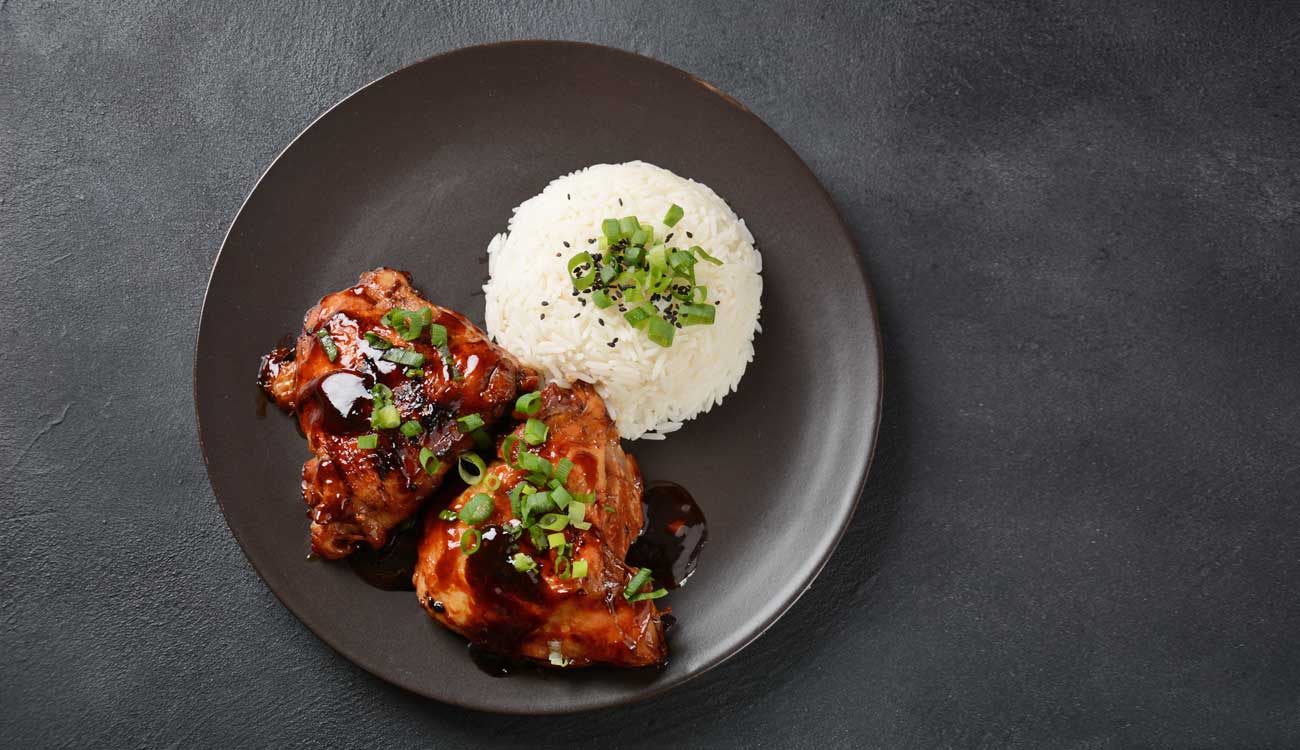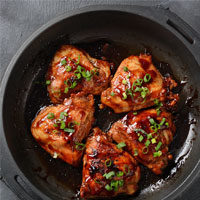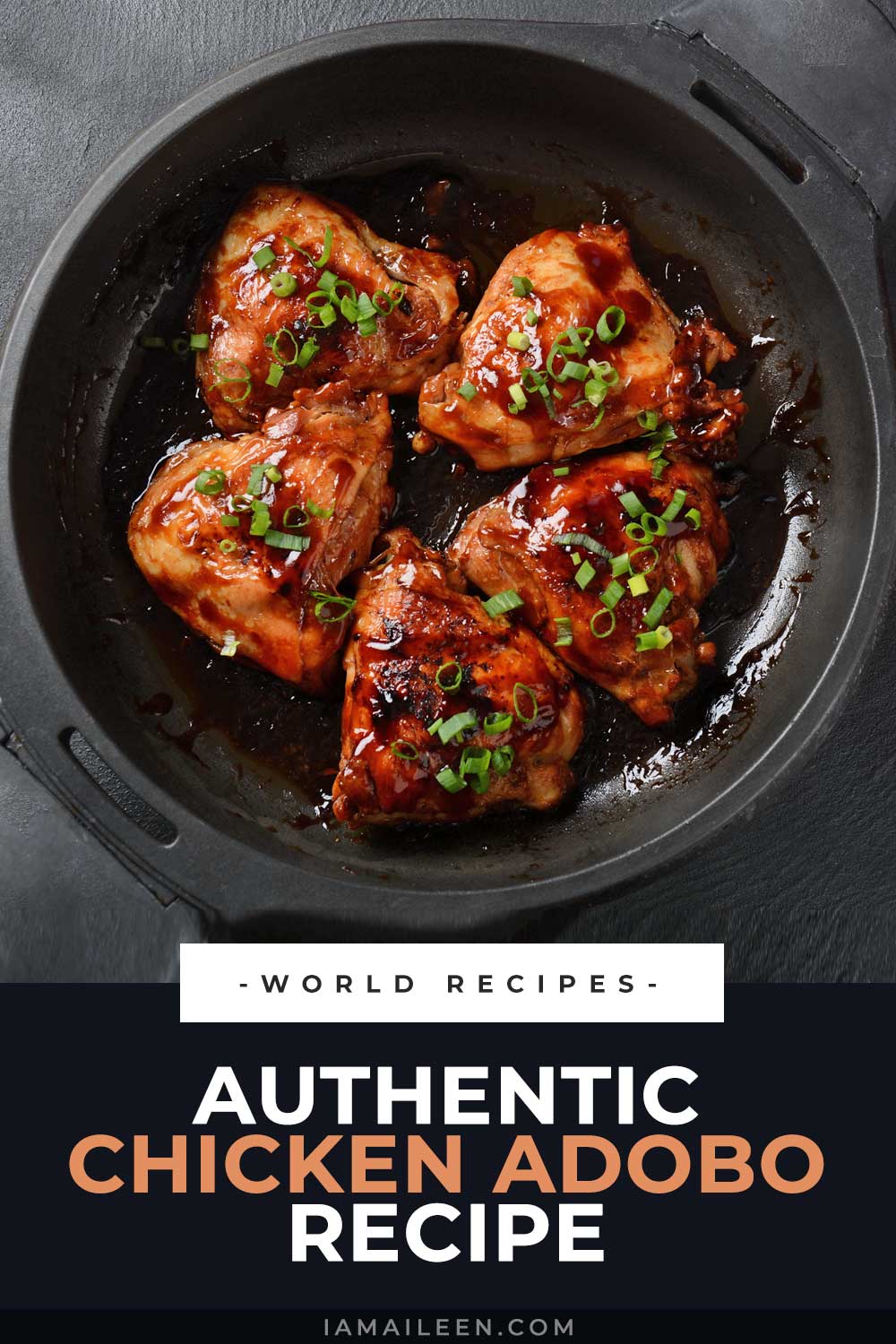Apart from the famous Philippines food or dishes such as lumpia and pancit, adobo is surely a crowd favorite — not only for locals but for foreigners too. In fact, it is arguably the (unofficial) national dish of the country, and given its popularity, there are various versions that have come to fruition; however, the chicken adobo recipe is said to always top the charts!
Looking for more food recipes?
Check out these amazing recipes from all over the world!
What is Adobo?
The word ‘adobo’ is a Spanish word derived from the word adovar which means “marinade” or “marinated meat”, and it helps to note that the Philippines’ adobo is entirely different from Spain’s adobo or adobar.
The former (Filipino adobo) is a dish in which the meat (usually pork or chicken) is predominantly stewed in vinegar mixed with other ingredients such as soy sauce, bay leaves, garlic and peppercorns; whereas the latter (Spanish adobo), though involving almost the same ingredients, is rather more spiced given that it traditionally uses chilis, paprika, and tomato paste.
.
As such, you can imagine how the Philippine adobo tastes saltier (if not sweeter), whereas the Spanish (or Mexican) adobo is spicier.
Besides, historical records have shown that the Philippines has long been stewing meat with vinegar, and when the Spaniards saw how similar it is to their own, they called it ‘adobo‘ — later on, the name just stuck and it has since been used by locals to call such a delectable dish.
Now, if you ask me, the amazing thing about the Philippines’ adobo is how its cooking method results in fork-tender meat that’s steeped in a thick and flavorful sauce. Pair it off with freshly-cooked rice and it will surely turn into your favorite comfort food!
The best part is that it’s simple to make; but it can be quite tricky, especially if you use the wrong cut of meat or if you use too much liquid. Nevertheless, this recipe post will help you make a balanced dish that will knock you off your feet.
Types of Adobo
Like I’ve previously mentioned, the most popular or common type of Filipino adobo uses chicken — but pork is also typically used — and it is stewed in five (5) usual ingredients: vinegar, soy sauce, bay leaves, garlic, and peppercorns.
However, adobo is also cooked in other ways in the Philippines! There is no clear number though on how many adobo kinds there are in the country, but below are some that are well-known:
- Adobong Puti: Translated to ‘White Adobo’, the dish actually ends up looking brown (like the most common chicken adobo recipe) but it is called as such because of how they only use three ingredients: vinegar, garlic and peppercorns. A lot of purists love this especially because it is reminicient of how the Filipino natives used to cook dish way before the Chinese introduced soy sauce in the country.
. - Adobo sa Buko: Buko means ‘coconut’ and this type is dominant in Southern Luzon. As the name implies, the dish has both coconut water and coconut meat mixed in which makes it light and sweet.
. - Adobo sa Gata: Similar to the previous one, except that it uses coconut milk (gata) and mixed with some green finger chili peppers too given how this is a common way of cooking in the Bicol region — an area that loves incorporating heat into their food!
. - Adobong Illongo: Popular in Visayas and Southern Luzon regions, achuete or annatto oil is substituted for the soy sauce which results in a reddish look for the dish.
. - Adobong Malutong: (Crispy Adobo) This involves shredding meat from leftover chicken and pork adobo, and then frying them in hot oil until they are crisp. This often results in a viand that has a long shelf-life!
- My hometown, Batanes, has a dish called luñis similar to this but made mainly of pork cooked with rock salt until its fat is rendered and turns golden brown.
.
- My hometown, Batanes, has a dish called luñis similar to this but made mainly of pork cooked with rock salt until its fat is rendered and turns golden brown.
Adobo is also made with seafood such as fish, squid, as well as shrimp — instead of the usual pork or chicken. Meanwhile, in Cavite, they rather use ‘puso ng saging’ or white banana flowers.
I can explore the recipes for these other kinds of adobo, but for this particular article, I’m rather going to share with you the details on how to make the most common type of them all: a chicken adobo recipe!
Chicken Adobo Recipe (Authentic Filipino Version)
The Philippines' unofficial national dish!
Ingredients
» Chicken & Marinade
- 6 chicken thighs (see *Note 1)
- 1/4 cup soy sauce (see *Note 2)
- 1/2 cup white vinegar (see *Note 3)
- 8 peeled and crushed garlic cloves
- 1 tsp whole peppercorns
- 3 dried bay leaves
» For Cooking
- 3 tbsp oil
- 1 1/2 cups water
- Brown sugar (optional)
- Sliced green onions (optional)
Instructions
- In a bowl, combine the ingredients listed under 'Chicken & Marinade', and marinate for at least 1 hour — best if you can do it overnight. (If only for an hour, try to flip the thighs to the other side by the 30th minute so that the whole of the chicken is well-marinated by the end of the hour. Otherwise, if you're in a rush, it's also fine if you can't marinate it.)
- Separate the chicken pieces only from the marinade but keep the marinade mixture for use later.
- Heat the oil in a large non-stick skillet. Once it's hot enough, sear the chicken pieces until brown (about 1 minute on each side only to brown them up; you do NOT need to cook the chicken through just yet).
- Pour in the marinade you set aside in step #2 into the skillet. Add the water too.
- Bring it all to a boil (do NOT stir until it starts boiling). Turn the heat down to medium or low. Cover the skillet and let it simmer for about 30 minutes (you can flip the chicken around the 15th-minute mark so that the other side gets soaked in the sauce too).
- By now, the sauce should be thick and rich; if it's not, you can put the heat higher so that the sauce is reduced faster. It helps to turn and baste the chicken in its own sauce once in a while to help add a bit more color to the chicken pieces.
- Once the sauce looks like a glaze, taste the sauce and see if it's to your liking. If you want to make it sweeter, stir in about a teaspoon of brown sugar (optional).
- Serve with steamed hot rice and sprinkle sliced green onions on top (optional).
.
LOCAL TIP: We love eating adobo a day after it is made because the flavors tend to be more absorbed or intensified!
OTHER TIPS: Want a DRY chicken adobo recipe? Continue simmering the sauce until it is completely gone. Or do you rather want a SAUCIER chicken adobo recipe? Just double the amount of soy sauce and vinegar, and don't let it glaze too much.
Notes
*Note 1: Some people use the breast part of a chicken, but for a more flavorful adobo, I recommend using either thigh or drumstick parts. After all, the fat in these chicken parts is needed to help transform the sauce into a good glaze.
So if you don't have bone-in thigh parts, you can use 1.5lb chicken thigh fillets or 2lbs chicken parts (mix of drumstick, fillets, etc.)
*Note 2: Do NOT use dark soy sauce because it's too intense; use only all-purpose or light soy sauce.
*Note 3: You can use any plain white vinegar, you can even substitute with apple cider if you want.
Nutrition Information:
Yield: 6 Serving Size: 1Amount Per Serving: Calories: 75Total Fat: 3gSaturated Fat: 1gTrans Fat: 0gUnsaturated Fat: 2gCholesterol: 30mgSodium: 600mgCarbohydrates: 2gFiber: 0gSugar: 0gProtein: 6g
The nutritional values indicated are merely an estimate for the specified serving yield.
• • •
Overall
I hope this chicken adobo recipe helps you make an amazing dish that you and your loved ones will love!
Let me know in the comments below.






Thank you for this chicken adobo recipe! It turned out so good!
I’m happy to hear that! Enjoy! :D
Im excited to try this for my family, my husband is half Filipino and Mexican. I hope he enjoys it